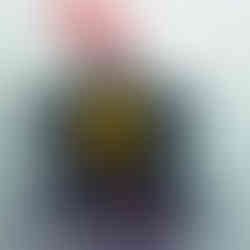Puerto Rican Vejigante Masks
- Todd DeGarmo
- Jul 14, 2021
- 3 min read
Hand-crafted paper mâché vejigante masks from Puerto Rico caught my eye in 2004 while walking on Broadway, proudly displayed in a hair salon in Saratoga Springs, NY.

The shop's owner gladly introduced me to the artist, Amil Droz Torres, a certified cultural Artisanal whose art studio and shop, Tuntuneco Arte Taino, was located in Boqueron, Puerto Rico.

Amil had also set up a local studio while living and working part time in upstate New York, and at the time, showing and selling in Saratoga Springs. I learned that he was also teaching and presenting as a guest artist throughout New York and Puerto Rico, and that his masks, sculptures, and paintings were found in museums, schools, and corporations. I visited his studio where he shared with me the tradition of the Vejigante.
The Vejigante is a fantastic, colorful character introduced into carnival celebrations hundreds of years ago. He is a classic example of the blending of African, Spanish, and Caribbean influences in Puerto Rican culture. Vejigante comes from the Spanish word for bladder, vejiga. The Vejigante inflates a dried cow's bladder and paints it to resemble a balloon. His costume is made from scraps of fabric and looks like a clown suit with a cap and bat wings under the arms.
The paper mâché vejigante masks made by Amil Droz Torres were an important component of the Carnaval de Vejigantes, the current annual celebration held in Ponce, Puerto Rico. Begun in 1991 but with roots much older, it is usually held in late January or early February, lasting 3 to 5 days, leading to Ash Wednesday and Lent. It is called a "town party" where some 15,000 folks wear masks and costumes to participate in the celebration featuring a parade, music and dance, food, arts and crafts, workshops. The main feature is the display of vejigante customs, and mostly focused on their masks.

The traditional vejigante masks of the Ponce Carnival are made of paper mâché and are characterized by the presence of multiple horns and bells. The mask was developed by Ponce artisans in the early part of the 20th century, and made from newsprint paper mixed with homemade glue and paint. The masks can be as big and elaborate as the artist's imagination. Commonly, they have a demonic or devilish appearance, but other resemble fantastic animals.

I wanted a mask to add to an exhibition of paper arts I was planning for the Library, and so commissioned a piece from Amil. He agreed, but insisted on measuring my face and head so I would not only add the piece to our Folk Art Collection, but I could also wear the mask in a Puerto Rican carnival, or at the very least, in local Halloween celebrations!
Amil also made another version of vejigantes masks. These are used in the Festival of Santiago Aposto observed the third week of July in the town of Loiza. It commemorates when Santiago appeared from the sky hundreds of years ago to lead the Christians to victory in battle against the Moors. Traditionally, the Loiza Vejigantes represent the Moors, wearing horned masks made from colorfully painted dried coconut husks, with horns made from palm branches that sprout from their foreheads. Amil closely followed the tradition with the 3-horned mask (left), but also took liberties with the multi-horned more contemporary masks to the right. The two masks to the left were also added to the Folk Arts Collection.

While in Saratoga Springs, Amil decided to expand the paper mâché mask-making tradition to include fantastical horse-head vejigantes. He found them especially popular with the horse racing crowd, and appreciated the increased sales. We also added this one to our collection. Tradition and the market meet face-to-face!
Some 17 years later, all four Puerto Rican vejigante masks by Amil Droz Torres have been sent to Canton, NY, currently on view in the exhibition, Folk Arts All Around Us: Selections from the Folk Art Collection of The Folklife Center at Crandall Public Library, at the TAUNY Center through October 23, 2021.
For more information in the Folklife Center:
The Vejigante and the Folk Festivals of Puerto Rico; a bilingual coloring book; and The Legend of the Vejigante (video), by Edwin Fontanez, Exit Studio, San Juan, Puerto Rico, 1994-95.
Folk Art Collection: Vejigante Doll by Ana M. Fontazez, 1995.
Folk Art Collection: Vejigante masks (4) by Amil Droz Torres, 1994.
Fieldwork photographs and notes by Todd DeGarmo, Folklife Collections, Crandall Public Library, Glens Falls, NY.



















Opmerkingen